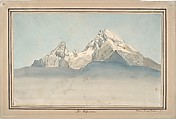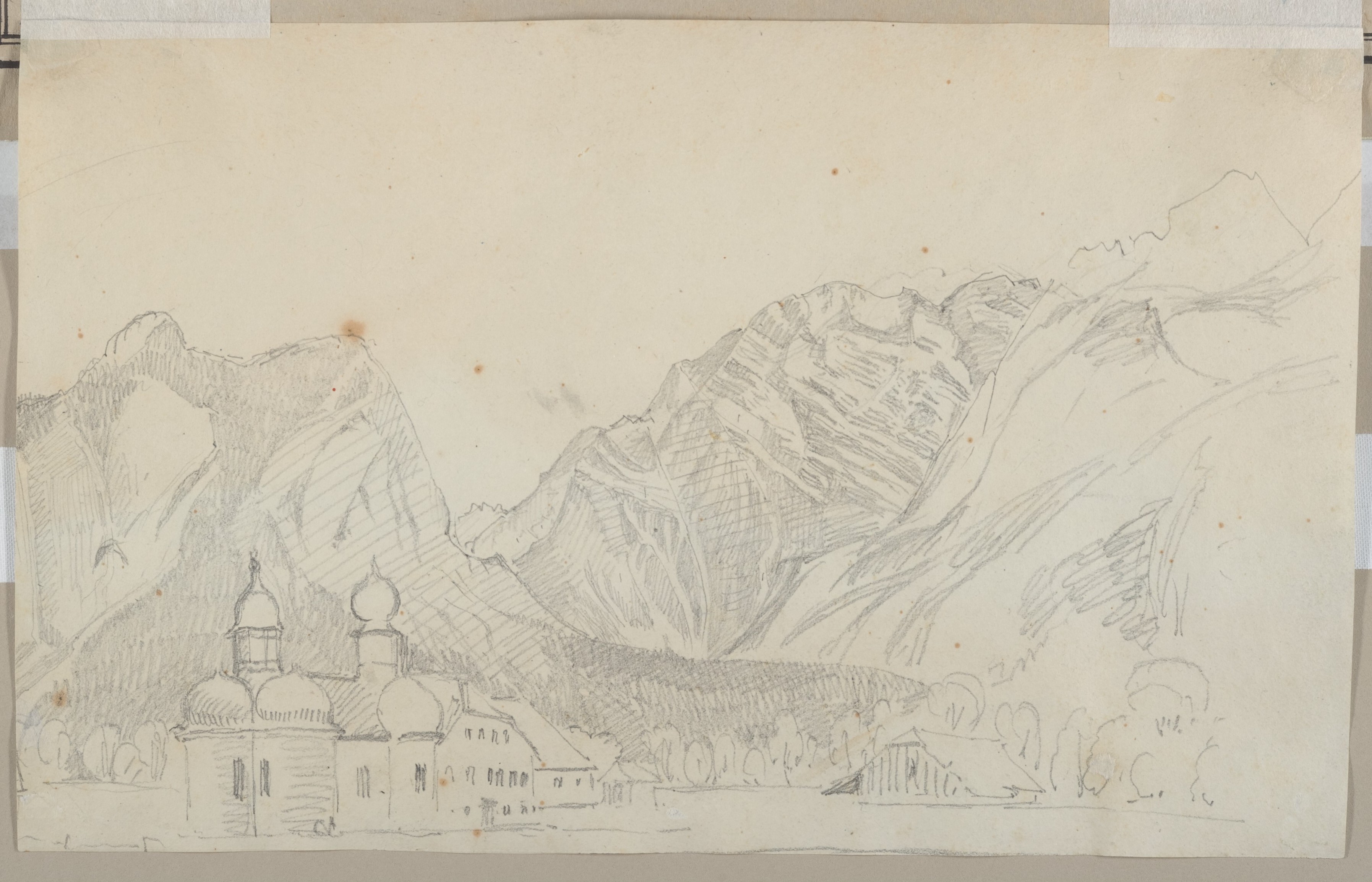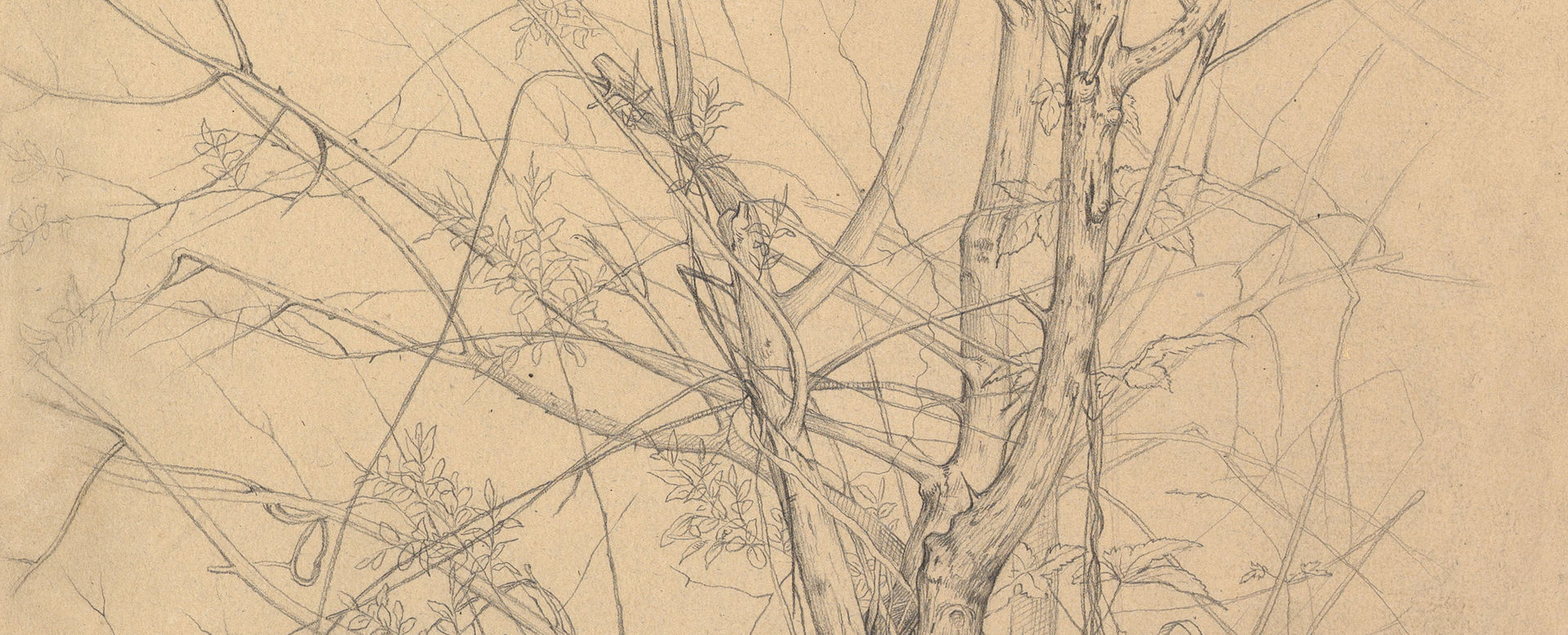The Watzmann seen from the northeast, with additional sketches of a mountain; verso: sketch of the church of Sankt Bartholomä on the Königsee at the foot of the Watzmann, seen from the east
August Heinrich German
Not on view
Situated near Salzburg, the Watzmann became a beloved subject for German and Austrian artists in the early nineteenth century. Here, by choosing to ignore the space between the Watzmann and the viewer, Heinrich isolated the mountain, one of Germany's highest, as if it were a divine vision. At the same time, he captured the details of the mountain's profile and geological structure. The great German painter Caspar David Friedrich, who never saw the Alps, seems to have used this drawing for one of his most celebrated pictures, The Watzmann (ca. 1824–25; Alte Nationalgalerie, Berlin). The two artists knew each other well: Friedrich depicted himself with Heinrich in his Two Men Contemplating the Moon, on view in the Metropolitan's galleries of nineteenth-century painting.
Due to rights restrictions, this image cannot be enlarged, viewed at full screen, or downloaded.
This artwork is meant to be viewed from right to left. Scroll left to view more.







